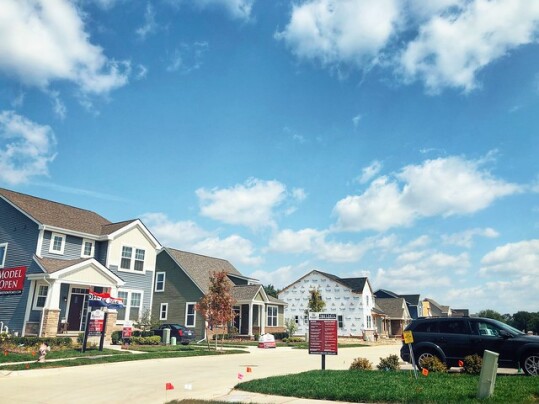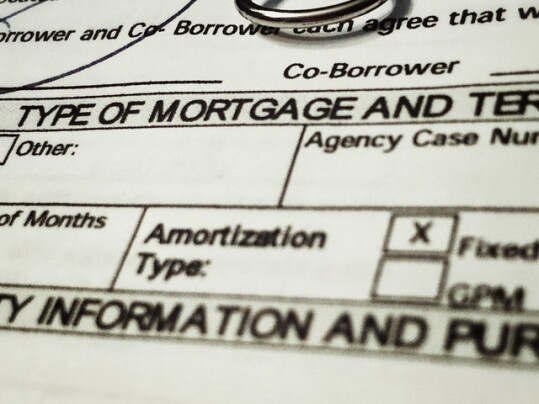Calculating how much house you can afford involves a few factors. You have to take into account how much you make, the price of the house, your mortgage rate, insurance, and property tax. You also have to factor in the rest of your household budget. It’s an equation every home buyer has to do for themselves. But, if you’re a prospective buyer just wondering generally how affordable buying a house is these days, ATTOM Data Solutions has some numbers. According to their first-quarter 2023 U.S. Home Affordability Report, buying conditions have improved slightly from the end of last year. In fact, the percentage of average wages required to cover homeownership expenses on a typical home fell 1 percent from the fourth quarter of 2022. In the first quarter, homeownership required 30 percent of average wages, down from 31 percent the quarter before. Rob Barber, ATTOM’s chief executive, says things have become slightly more favorable for buyers. “Things certainly haven’t swung way back into friendly territory,” Barber said. “Price drops and wage gains haven’t yet translated into equal improvements in affordability … but the scenario is becoming more favorable for buyers.” (source)
Archive for March 2023
Affordability Conditions Improved During 1st Quarter
30-Year Fixed Rate Falls For 3rd Straight Week
According to the Mortgage Bankers Association’s Weekly Applications Survey, average mortgage rates for 30-year fixed-rate loans with both conforming and jumbo balances fell last week from the week before. It was the third consecutive weekly decline. Rates were also down for 15-year fixed-rate loans, though FHA loans and 5/1 ARMs both saw slight increases. Joel Kan, MBA’s vice president and deputy chief economist, says falling rates helped boost home buyer demand. “Application activity increased as mortgage rates declined for the third straight week. The 30-year fixed rate declined … to the lowest level in over a month,” Kan said. “While the 30-year fixed rate remained 1.65 percentage points higher than a year ago, home buyers responded, leading to a fourth straight increase in purchase applications. Home-price growth has slowed markedly in many parts of the county, which has helped improve buyers’ purchasing power.” Last week, overall demand for mortgage applications was 2.9 percent higher than the week before. The MBA’s weekly survey has been conducted since 1990 and covers 75 percent of all retail residential mortgage applications. (source)
Home Price Increases Continue To Slow
When it comes to affordability, prospective home buyers have their eye on two things: mortgage rates and home prices. Rates, of course, have been up and down lately, after rising from historic lows early last year. Home prices, on the other hand, have been fairly steady. In fact, according to the latest S&P Case-Shiller Home Price Indices, they’ve been gradually slowing since their peak last June. Craig J. Lazzara, managing director at S&P, says the National Composite Index is down around 5 percent since then. “2023 began as 2022 had ended, with U.S. home prices falling for the seventh consecutive month,” Lazzara said. “The National Composite declined by 0.5 percent in January, and now stands 5.1 percent below its peak in June 2022.” But while prices are down from their peak, they’re still higher than last year. At the beginning of the year, they were 3.8 percent higher than one year earlier, with some cities still reporting double-digit, year-over-year increases. (source)
Pent-Up Home Buyer Demand Remains Strong
Each month, Fannie Mae’s Economic and Strategic Research Group releases a forecast covering what they think is ahead for the housing market and economy. According to their March outlook, the group says economic data has started the year off stronger than expected and – while a lot of uncertainty still exists – the housing market is poised to help moderate any potential downturn should one occur in the second half of the year. “While housing writ large has responded to the Fed’s monetary tightening in a relatively predictable fashion, the rapid uptick in home sales in response to modest rate declines earlier this year corroborates our long-standing expectation that the housing sector will help moderate any future recession due to the significant pent-up demand,” Doug Duncan, Fannie Mae’s senior vice president and chief economist, said. In other words, the group believes the Fed will likely slow interest rate increases in the case of a recession. If that happens, lower rates would then help spur buyer demand, which remains significant and ready to move when affordability conditions improve. (source)
New Home Sales Continue To Improve
New numbers from the U.S. Census Bureau and the Department of Housing and Urban Development show new home sales rose again in February, increasing 1.1 percent from the month before. The improvement was the third consecutive monthly gain and could be a sign that buyer demand is beginning to climb as the spring season approaches. However, the gains could also be due to mortgage rates, which declined in January and February after peaking at the end of last year. The new home market is also likely benefitting from the lack of existing homes available for sale. The inventory of previously owned homes remains lower than normal and could be pushing home shoppers to look at newly built options. Those shoppers need to be prepared, though. New homes are generally more expensive than existing homes. And, according to the report, they’ve gotten even more expensive, with the median price of new homes sold in February reaching $438,000, up from $427,500 the month before. (source)
Spring Housing Market Could Be Competitive
February definitely isn’t spring, but it is the month when the spring housing market begins to ramp up. So what does February’s data tell us about what to expect this spring season? Well, according to one newly released report, the early numbers show home sellers are off to a slow start and it could lead to a competitive spring. The number of homes for sale – though up 17 percent from its bottom last winter – is still well below pre-pandemic norms. Also, new listings are 22 percent lower than last year at the same time. That means, while there has been some improvement in the overall number of homes for sale, buyers should still expect there to be competition for good homes that are priced correctly. Put simply, attractive homes will sell quickly. In February, for example, the median number of days homes for sale went under contract was 17. That’s not as fast as it was last year or the year before, but it’s still fast enough that spring buyers should be prepared, pre-approved, and ready to move when they find a house that fits their needs. (source)
Mortgage Rates Fall To Lowest Level In A Month
According to the Mortgage Bankers Association’s Weekly Applications Survey, average mortgage rates fell last week from one week earlier. Rates were down across all loan categories, including 30-year fixed-rate loans with both conforming and jumbo balances, loans backed by the Federal Housing Administration, 15-year fixed-rate loans, and 5/1 ARMs. Joel Kan, MBA’s vice president and deputy chief economist, says the decline was due to concerns about the banking sector. “Treasury yields declined last week, driven by uncertainty over the health of the banking sector and worries about the broader impact on the economy,” Kan said. “Mortgage rates declined for the second week in a row, with the 30-year fixed rate dropping to .. the lowest level in a month.” The drop led to an increase in demand for mortgage applications, with both refinance and purchase loan activity up from the week before. The MBA’s weekly survey has been conducted since 1990 and covers 75 percent of all retail residential mortgage applications. (source)







